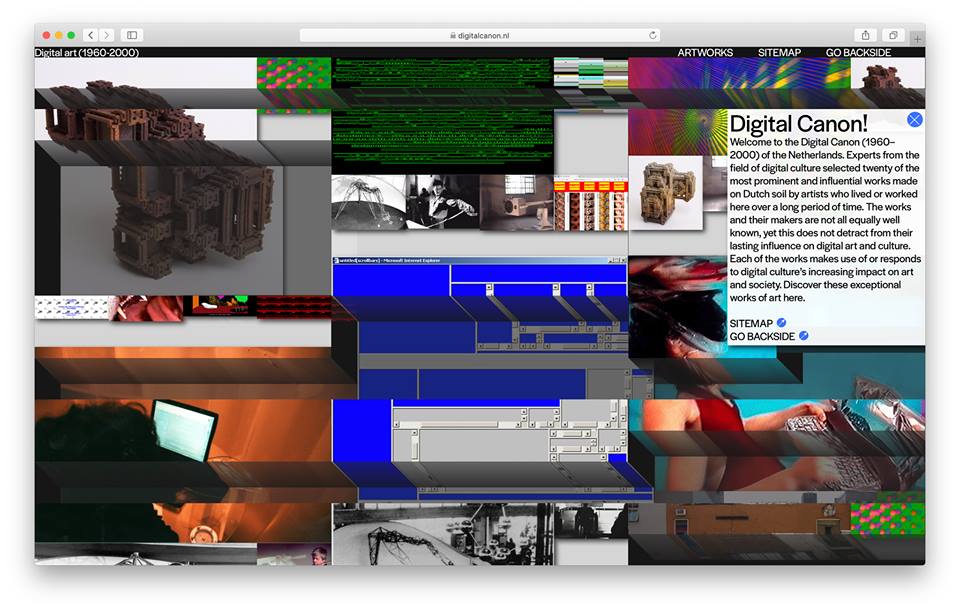Proud to have Mouchette in this archive!
The Digital Canon (1960–2000) of the Netherlands. Experts from the field of digital culture selected twenty of the most prominent and influential works made on Dutch soil by artists who lived or worked here over a long period of time. The works and their makers are not all equally well known, yet this does not detract from their lasting influence on digital art and culture. Each of the works makes use of or responds to digital culture’s increasing impact on art and society. Discover these exceptional works of art here.

Read here why Li-Ma created the Digital Canon
The project has been carried out by a core group (‘the expert group’) and in collaboration with numerous experts from the field. The core team consisted of Josephine Bosma (researcher and critic), Martijn van Boven (artist and tutor), Annet Dekker (researcher and curator), Sandra Fauconnier (art historian) and Jan Robert Leegte (artist and tutor). The project was coordinated by LIMA and supervised by Gaby Wijers (director) and Sanneke Huisman (curator). Additional national and international experts were involved in various international meetings. Together with them, a broadly supported selection was made, while the often authoritarian selection procedures that lie at the basis of canonization were critically reflected upon.The result can be seen on a website dedicated to the project: www.digitalcanon.nl. The twenty canonical works here each have their own page with images, excerpts, videos, quotes from the artists and texts. The works have been researched for this purpose. In addition, the website also contains clear insight into the development of the selection presented and some critical texts about canonizing digital art. The design emphasizes this dual nature by dividing the website into a front and back. This innovative design is made by Yehwan Song. Song is a South Korean designer, web designer and web developer. She designs and develops experimental websites and interactive graphical interfaces. Song is known for her playful design in which she reverses and challenges the general understanding of web design both conceptually and visually.
Follow-up
The canon is by no means an endpoint, but is the starting point for further investigation of the selected works. The first follow-up steps are already being taken. In addition to the website, an exhibition concept will be developed, which involves various relevant issues. For some of the selected works, for example, only documentation material is left and for other works restoration is needed. The canon is also a starting point for discussion and critical reflection, whereby canon formation and the selection procedure are critically examined. The title of the conversation between Josephine Bosma, Martijn van Boven, Annet Dekker, Sandra Fauconnier, Jan Robert Leegte and Gaby Wijers is significant from this point of view: “Canonization as an Activist Act”. The traditional form of canonization is used to open a conversation. The expert group invites the field to make its voice heard. The first external text has already been published on the website: Re-writing the Present: To Inhabit the Inhabitable by Willem van Weelden looks critically and philosophically at (the lack of) historical awareness in the field of canonization and preservation of digital art.